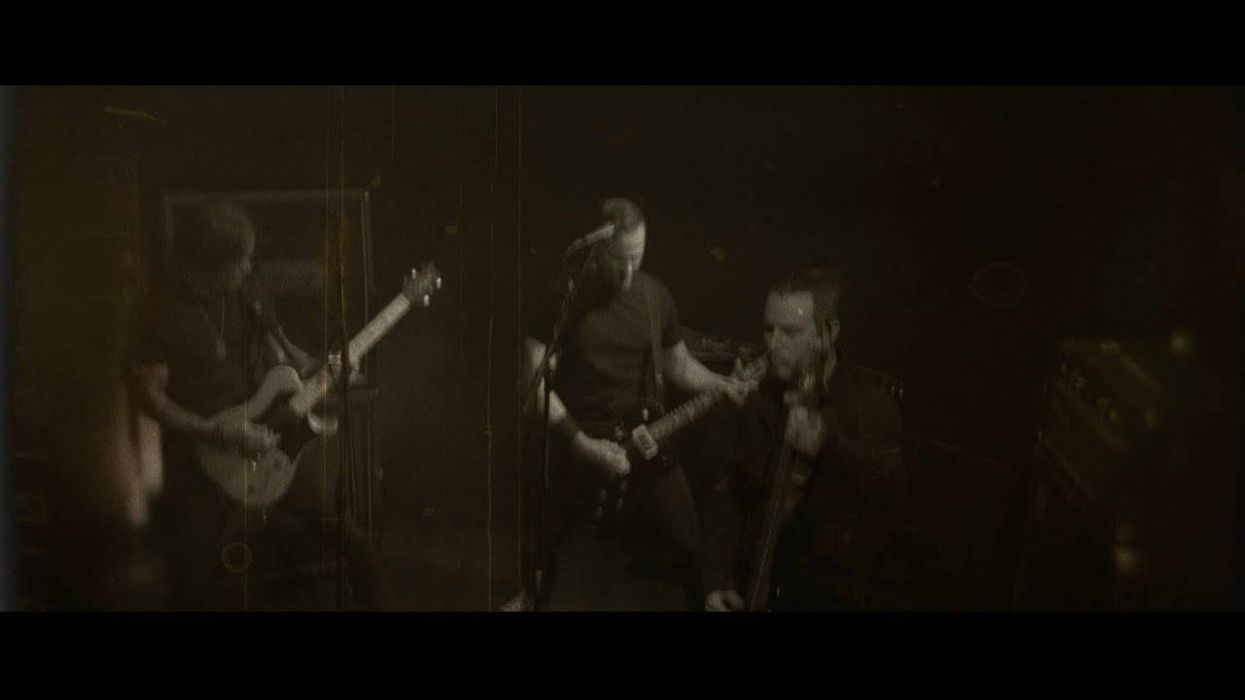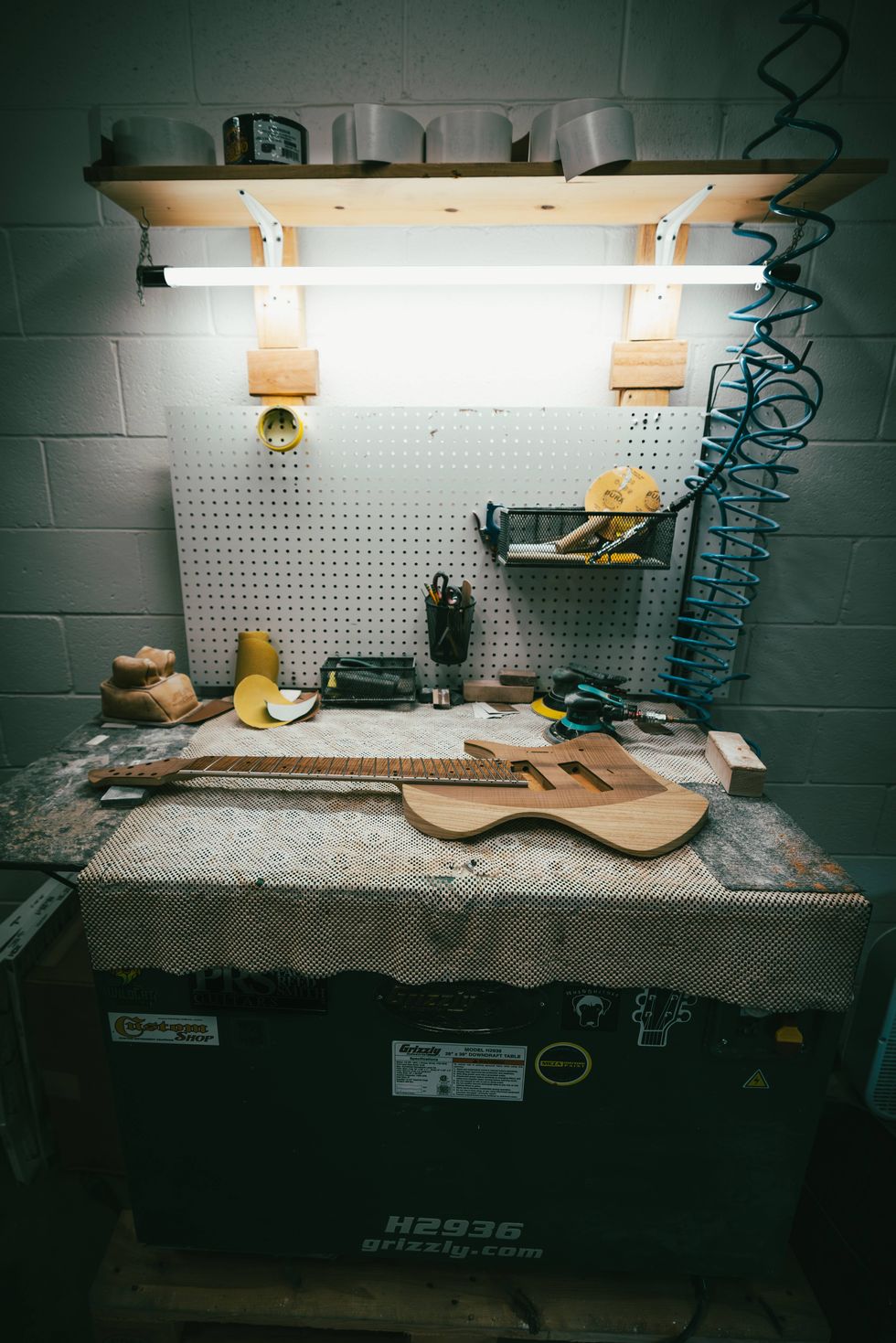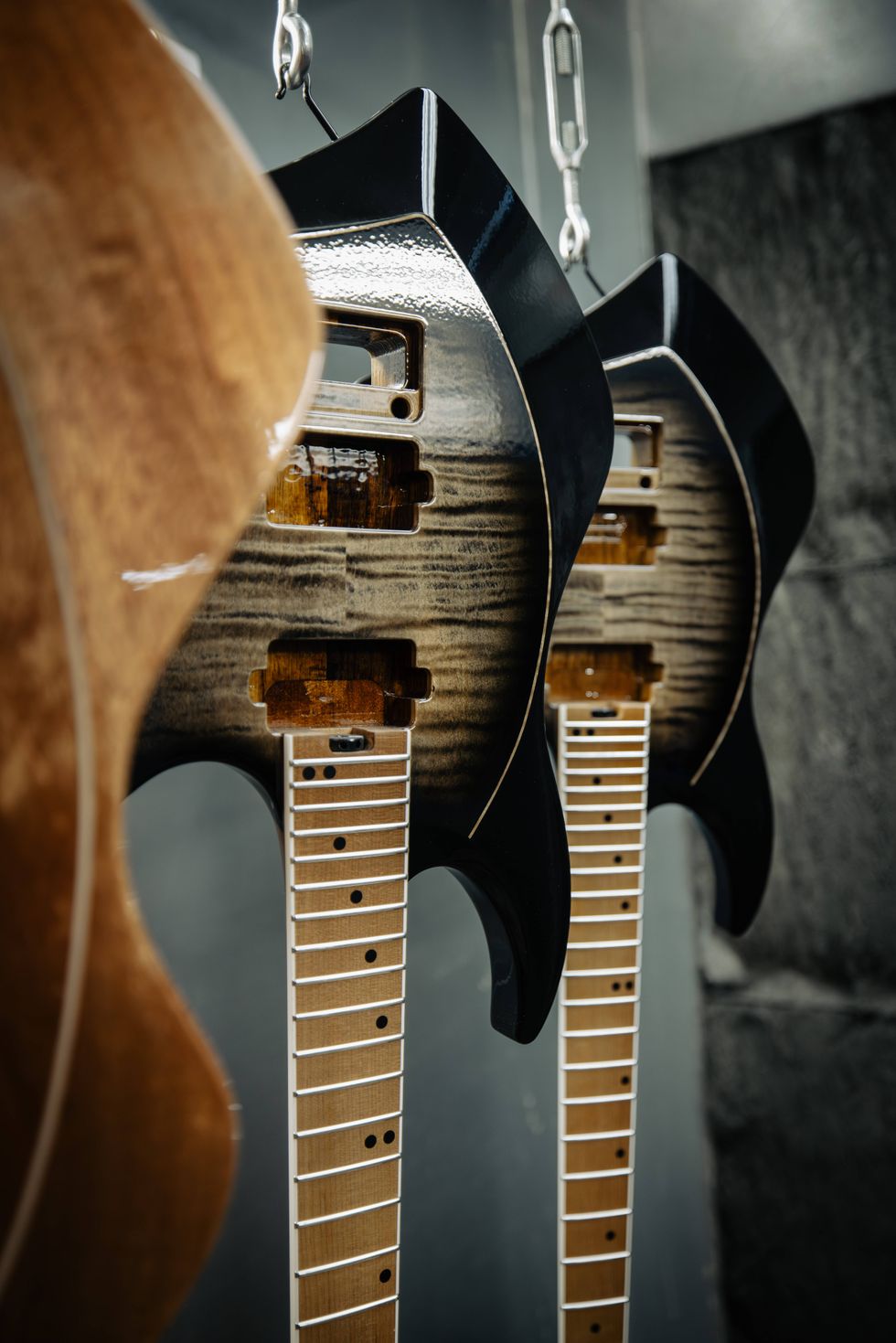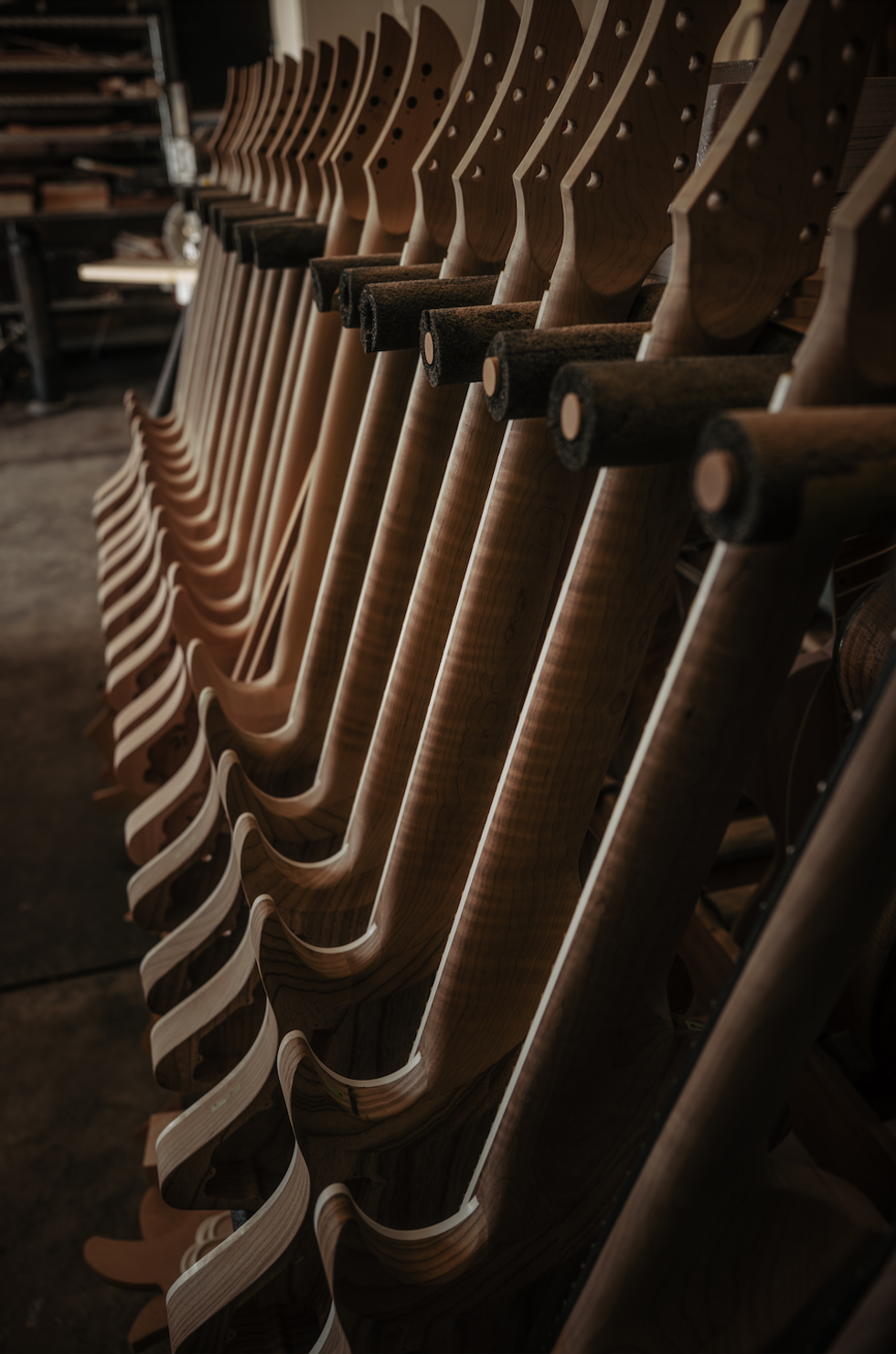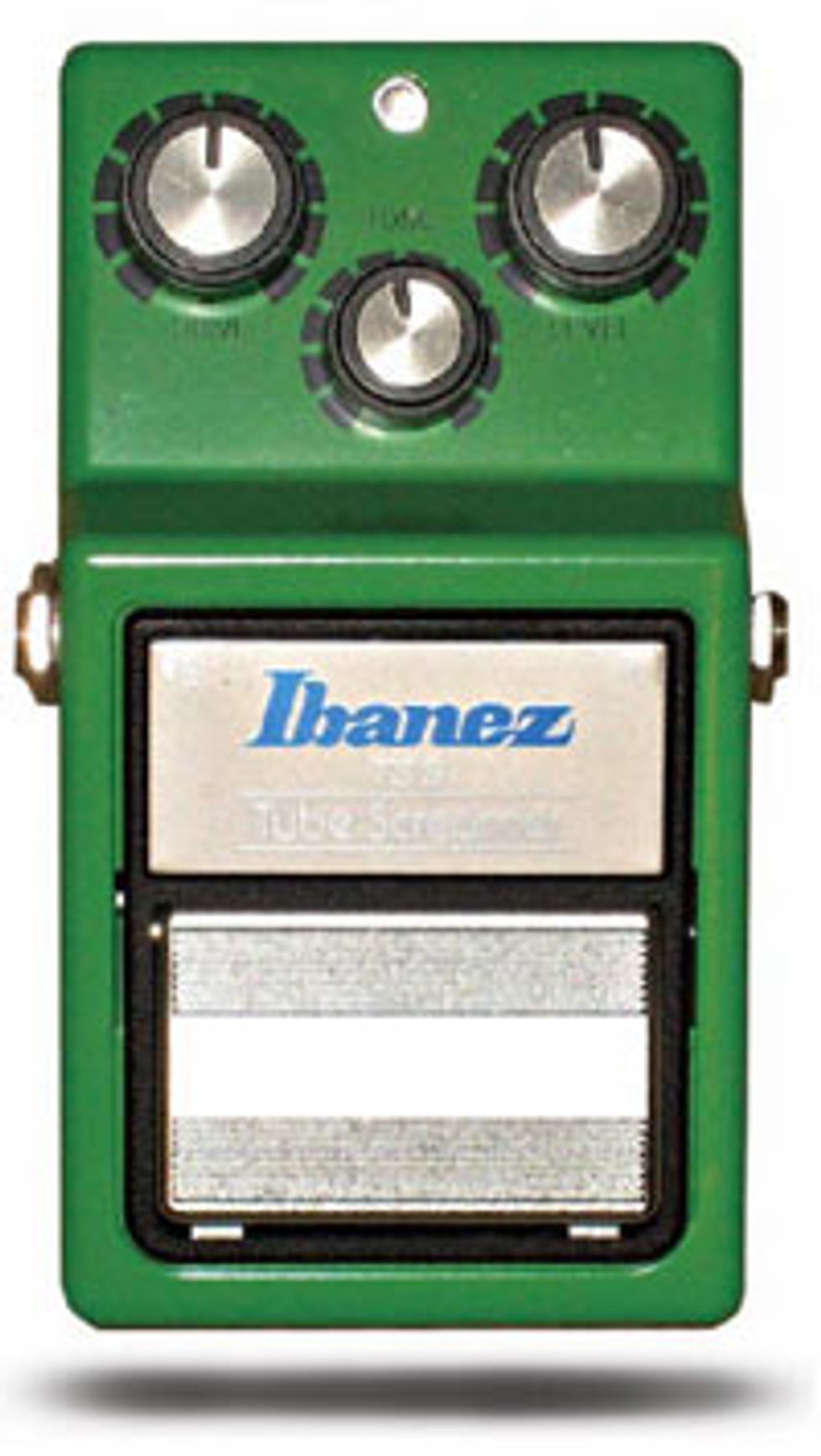 Greetings, all ye pedalheads! This month we’re going to discuss our take on effects modifications. Most players these days are at least aware of the availability of effects mods as a way to unlock the sonic potential of inexpensive, mass-produced pedals made by the major manufacturers. The most popular and common of these is the Ibanez TS9 Tube Screamer, the quintessential pedal mod. The Ibanez TS9/808 mod was popularized by Analog Man beginning in the early nineties and has since spawned an entire cottage industry based on this simple concept: Take a stock, mass-produced pedal and replace certain cheap components with higher audio grade parts, and change the values of a few key components to further refine the tone.
Greetings, all ye pedalheads! This month we’re going to discuss our take on effects modifications. Most players these days are at least aware of the availability of effects mods as a way to unlock the sonic potential of inexpensive, mass-produced pedals made by the major manufacturers. The most popular and common of these is the Ibanez TS9 Tube Screamer, the quintessential pedal mod. The Ibanez TS9/808 mod was popularized by Analog Man beginning in the early nineties and has since spawned an entire cottage industry based on this simple concept: Take a stock, mass-produced pedal and replace certain cheap components with higher audio grade parts, and change the values of a few key components to further refine the tone. Analog Mike recalls, “The TS9/808 mod started sort of by accident in the early nineties based on someone telling me there was not much difference between a TS9 and a TS808. I had both, so I compared them and figured out the changes. Then I found some of the JRC4558D chips in an electronics stall in Akihabara, Tokyo, and I brought them back and did some mods. I did 808 mods for people who corresponded with me by e-mail and the Usenet groups, and they really liked them. When the reissue TS9 came out around 1993 it really took off, as you could have a TS-808 clone easily and for not much money. Then in ’94, I also started modifying Fuzz Faces. I didn’t really intend to get into the effects modification business; I was just sort of having fun and getting people hooked up with some good tones. I started the Analog Man website in ’95 and it’s been non-stop ever since.
“Customers always asked for different things so we’ve tested a number of mods. By then the DIY sites had a lot of info on modifying Tube Screamers. I’ve pretty much tried them all, but most of the mods actually took away from the sweet tone so we never offered them. The mods we offer now are still mostly on Ibanez and Boss pedals. We try to offer professional-sounding mods for the cheapest, most popular pedals, so people can upgrade what they have when they get more serious about their tone. Boss pedals are super-reliable and available everywhere, so they’re great for mods. We also do a lot of mods on Maxon OD9 and SD9 pedals. They are the same as Ibanez but have true bypass so they sound a little better both on and off. Every day I get requests for new mods, but time is scarce so we only work on something that I think will be popular and fill a need in the marketplace at a good value, and not something someone else is doing.”
Although more popular now than ever, effects modification is nothing new. Stomp gurus Roger Mayer and Pete Cornish began their careers in the late sixties, in part by performing pedal mods for their famous clients. In the seventies, amp mods and hotrodded guitars were in vogue, which is why today we occasionally see Plexi Marshalls with drilled chassis and sixties Strats with Floyd Rose routing (ouch!). Pedal modifications were just a natural outgrowth of that idea. We guitarists seem to have always liked to tweak our gear and have things customized just to our liking.
Now that we’ve mentioned questionable modifications to vintage guitars and amps, it raises the question of whether or not players should modify their valuable vintage pedals. Here is our expert opinion – it’s okay to perform certain mods on most vintage effects. Many old pedals are notorious tones suckers, such as original MXR, Electro-Harmonix and Crybaby wahs. These can all benefit from a true bypass mod. In terms of dos and don’ts, it helps to think of vintage effects as the same as vintage amps. Keep the modifications reversible. If you can’t undo the mod, it may not be a good idea. It makes me cringe to see an original script logo Phase 90 that’s had the case drilled for the addition of a LED and power jack.
You don’t need to save the original power cord and switch in case you want to put the pedal back to stock – that’s just kind of silly. The only exception would be certain rare, highly collectible, vintage fuzz pedals, such as an original Fuzz Face or Tone Bender, where there are few components and each one is deemed highly important to the overall value of the unit.
Well, that’s about it – class dismissed! Check back with us again next month. Until then, keep on stompin’!
Tom Hughes
(a.k.a. Analog Tom) is the owner and proprietor of For Musicians Only (formusiciansonly.com) and author of Analog Man’s Guide To Vintage Effects. For Musicians Only is also the home of the FMO Gear Shop. Questions or comments about this article can be sent to: stompschool@formusiciansonly.com
Analog Man
(analogman.com) is one of the largest boutique effects manufacturers and retailers in the business, established by “Analog” Mike Piera in 1993. Mike can be reached at AnalogMike@aol.com


